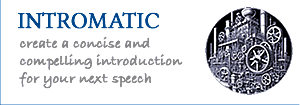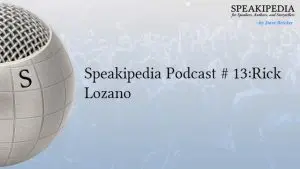By Dave Bricker
Great words fail without great delivery, yet so many speechwriters deliver a manuscript and leave the performance up to the (often-inexperienced) speaker.
Paste your speech into the box below to prepare it for rehearsal and delivery. This wizard allows you to insert pauses, dynamic shifts, and performance notes.
To explore and experiment, use the “Add Sample Text” button to load a sample annotated speech or Abraham Lincoln’s Gettysburg Address.
Start by using the “Break lines” button to render your speech in what Winston Churchill called “psalm form.” Think of the individual lines as “idea bubbles” that are easier to focus on than blocks of prose. Feel free to recombine or further divide the speech into short phrases and ideas. Try a dry read of the new format and you’ll already feel your performance improve.
The “Add Emphasis” button will underline any text you highlight. This simple emphasis is often all you need to punch up an otherwise monodynamic line.
Four score and seven years ago our fathers brought forth on this continent, a new nation, conceived in Liberty, and dedicated to the proposition that all men are created equal.
Use the “Insert Note” button to add a new line with a performance note before the line containing your selection. Edit the dummy note to create your own.
Remember this speech was delivered at a memorial dedication. Be stern and severe.
Use the “Volume” Menu to annotate louder and softer passages.
VERY LOUD PASSAGES LOOK LIKE THIS!
LOUD PASSAGES LOOK LIKE THIS!
Soft passages look like this.
Very soft passages (whispers) look like this.
Use the “Speed” menu to annotate faster and slower passages. Speed changes are set in italic text with wider or narrower letter spacing denoting the speed.
Very fast passages look like this.
Fast passages look like this.
Slow passages look like this.
Very slow passages look like this.
Use the “Pitch” menu to annotate higher and lower pitches. For example, you might speak in a higher voice if you’re afraid or a lower voice if you’re playing a bully in a dialogue. Pitch changes are in italics.
(↑↑) Very high-pitched passages (↑↑) look like this.
(↑) High-pitched passages (↑) look like this.
(↓) Low-pitched passages (↓) look like this.
(↓↓) Very-low-pitched passages (↓↓) look like this.
Use the “Pause” menu to insert pauses between words or at the end of lines.
Short pauses look like … this.
Longer pauses look like …… this.
Very long pauses look like ……… this.
Extremely long pauses look like ………… this.
The “Add Emotion” menu inserts emojis into your speech. Use these as rapid visual cues to change faces or convey emotions.
The Speech Annotator
Already have access? Log in here.

















 Grinning
Grinning
 Crying
Crying
 Angry
Angry
 Heart Eyes
Heart Eyes
 Cool
Cool
 Thinking
Thinking
 Sleepy
Sleepy
 Laughing
Laughing
 Smiling
Smiling
 Loudly Crying
Loudly Crying
 Screaming in Fear
Screaming in Fear
 Eye Roll
Eye Roll
 Pouting
Pouting
 Smiling Face with Hearts
Smiling Face with Hearts
 Smirking
Smirking
 Innocent
Innocent
 Mind Blown
Mind Blown
 Zipper-Mouth
Zipper-Mouth
 Nauseated
Nauseated



